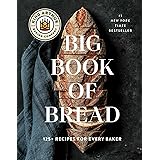Have you ever stood in the dairy aisle, utterly overwhelmed by the sheer number of choices? Organic, grass-fed, A2, ultra-filtered milk; European, cultured, grass-fed butter—it’s enough to make your head spin! It wasn’t always this complicated. My own trips to the grocery store often felt like navigating a labyrinth, trying to decipher labels and claims. But what if I told you that making the *best milk and butter* choices for your health and taste buds doesn’t have to be a mystery?
The video above is a fantastic guide, cutting through the confusion to highlight what truly matters when selecting quality dairy. But understanding the ‘why’ behind those recommendations can further empower your shopping decisions. This article will dive deeper, expanding on the nuances of dairy, from the pastures where the cows graze to the processes that bring milk and butter to your table, ensuring you’re equipped to buy the absolute best milk and butter available.
Navigating the Milk Aisle: Decoding Your Dairy Choices
The milk section of any grocery store, whether it’s a bustling Whole Foods or your local supermarket, presents a dazzling array of options. Far beyond the simple whole milk versus low-fat debate, we now face choices that reflect different farming practices, nutritional profiles, and processing methods. Selecting the best milk starts with understanding these distinctions.
Beyond Basic: The Case Against Conventional Milk
When you spot what might be labeled as “basic” or “conventional” milk, often from large-scale brands, it’s typically the kind the video advises against. This category of milk often comes from cows fed an exclusive diet of genetically modified (GMO) grains, predominantly corn and soy. The concern here is not just about the cows’ diet but how it impacts the final product. Many experts suggest that the nutrients and compounds from these feeds can transfer into the milk, potentially affecting its quality.
Furthermore, conventional dairy farming practices are often associated with larger feedlots, where cows may not have ample opportunity to graze naturally. This environment can raise questions about animal welfare and the environmental footprint. For these reasons, opting for alternatives provides a significant step up in both nutritional value and ethical considerations when choosing your milk and butter.
The Organic Advantage: A Step Up for Health and Ethics
Stepping up from conventional, organic milk presents a widely available and often surprisingly affordable upgrade. As highlighted in the video, a gallon of organic milk can be found for around $6, making it accessible to many budgets. The “organic” label, specifically USDA Organic, isn’t just a marketing ploy; it signifies adherence to strict standards.
By law, organic dairy cows must be pasture-raised for a minimum of 120 days (four months) out of the year, allowing them to graze naturally. Crucially, their feed must be 100% non-GMO and cannot contain synthetic pesticides, hormones, or antibiotics. While some approved natural pesticides may be used, the overall reduction in chemical exposure is a significant benefit. This commitment to non-GMO, pasture-based feeding practices contributes to milk that is generally considered healthier for consumers, better for the cows, and more sustainable for the environment.
The Gold Standard: Why 100% Grass-Fed Organic Milk Reigns Supreme
For those seeking the absolute best quality milk, 100% grass-fed organic milk stands as the pinnacle. Brands like Maple Hill and Organic Valley are pioneers in this space, and even more accessible stores like Aldi are now offering grass-fed options. What makes this milk superior? The answer lies in the cow’s natural diet.
Cows are ruminants, designed to digest grass, not grain. When cows are exclusively grass-fed, their milk boasts a superior nutritional profile. This includes significantly higher levels of omega-3 fatty acids—those crucial fats known for their heart-healthy and anti-inflammatory benefits. Concrete studies have demonstrated that grass-fed dairy can contain up to five times more omega-3s compared to conventional milk. Additionally, grass-fed milk is richer in conjugated linoleic acid (CLA), a potent fatty acid linked to various health benefits, including supporting heart health and immune function.
Beyond nutrition, the benefits extend to animal welfare and environmental sustainability. Pasture-raised, grass-fed cows contribute to healthier soil by pruning and stamping their hooves, which helps create natural water wells and enhances biodiversity. This holistic approach supports a healthier ecosystem, a more humane life for the animals, and ultimately, a more nutritious product for us to enjoy. While a half-gallon might typically cost around $5.89, the investment in such high-quality milk for daily consumption is often justified by its comprehensive advantages.
Whole Milk vs. Reduced-Fat: Embracing Healthy Fats
The diet trends of the 1980s and 90s instilled a fear of fat, leading many to automatically reach for reduced-fat or skim milk. However, contemporary nutritional science has largely debunked this notion, especially when it comes to healthy fats from quality sources. When selecting your milk, particularly organic or grass-fed varieties, always opt for whole milk.
Whole milk contains all the natural fat, which is crucial for absorbing fat-soluble vitamins (A, D, E, K) present in the dairy. Furthermore, the fat in whole milk, especially from grass-fed cows, contributes to satiety, helping you feel fuller for longer. This natural fat also carries the higher concentrations of beneficial omega-3 fatty acids and CLA that we seek in grass-fed dairy. Reducing the fat content in milk means reducing these vital nutrients and sacrificing the natural richness and creaminess that makes dairy so enjoyable and satiating, whether in your coffee or with yogurt.
Specialty Milks: Exploring Unique Options
Beyond the conventional, organic, and grass-fed categories, the dairy aisle offers a fascinating range of specialty milks, each with unique characteristics and potential benefits. Understanding these options can help you tailor your milk choice to specific dietary needs or preferences.
Ultra-Filtered Milk: Protein Powerhouse, Lower Sugar
A relatively new entrant to the market, ultra-filtered milk, such as Fairlife, undergoes a process similar to that used for Greek yogurt. Through specialized filtration, the milk is concentrated, resulting in a product with significantly reduced sugar (lactose) and increased protein. For example, some brands boast 50% less sugar and up to 13 grams of protein per serving compared to traditional milk. This makes it an excellent choice for individuals seeking lower-sugar, higher-protein options or those with mild lactose sensitivities, as a significant portion of the lactose is removed. While ideal options would also be grass-fed and organic, the benefits of higher protein and lower sugar can be compelling for certain dietary goals.
A2 Milk for Sensitive Stomachs
For many individuals, dairy discomfort isn’t about lactose but rather sensitivity to A1 beta-casein protein, which is common in conventional cow’s milk. A2 milk comes from cows that naturally produce only the A2 beta-casein protein, which is structurally different and often easier for sensitive stomachs to digest. This can be a game-changer for people who experience bloating, gas, or general digestive upset after consuming regular milk, allowing them to enjoy dairy without discomfort.
However, a current challenge with A2 milk is the limited availability of organic or grass-fed options. While the A2 protein structure offers digestive benefits, prioritizing organic and grass-fed practices (non-GMO feed, pasture access) still provides broader nutritional and ethical advantages. Consumers must weigh these factors based on their primary concerns.
The “Walking Dead” Milk: Understanding UHT Pasteurization
You might have noticed milk cartons on unrefrigerated shelves, often with expiration dates months into the future. This “shelf-stable” milk is processed using Ultra-High Temperature (UHT) pasteurization, a method that heats milk to very high temperatures (typically 280-300°F or 138-149°C) for a few seconds. This intense heat effectively sterilizes the milk, killing nearly all bacteria and spores, allowing it to remain fresh for six to twelve months unopened.
While UHT milk offers convenience and peace of mind for emergency preparedness (hence the “Walking Dead” moniker), it comes at a nutritional cost. The extreme heat can denature some proteins and enzymes, and while vitamins are largely retained, the “living” enzymes and beneficial bacteria found in less intensely pasteurized milk are destroyed. Conversely, most refrigerated milk uses High-Temperature, Short-Time (HTST) pasteurization, which heats milk to a lower temperature (around 161°F or 72°C) for about 15-30 seconds. This method kills harmful pathogens while preserving more of the milk’s natural enzymes and flavor profile, making it generally preferred for daily consumption.
The Purest Form: Discovering Raw Milk
For the ultimate in freshness and nutritional integrity, raw milk stands alone. Unpasteurized and unhomogenized, raw milk retains all its natural enzymes, beneficial bacteria, and nutrients in their most bioavailable forms. Many who try raw milk for the first time describe a rich, creamy, and distinct flavor that often surprises them. As demonstrated by the experience in Dundee, Illinois, connecting directly with a local farm can provide access to this exceptional product.
However, access to raw milk is heavily regulated and varies by state. In some regions, it can be purchased directly from farms through “cow share” programs, while in others, it’s more readily available. The key is to source raw milk from reputable, clean farms with rigorous health and safety standards. When raw milk is also grass-fed, it represents the absolute best-in-class option, offering unparalleled nutritional benefits and a truly authentic dairy experience, making it an excellent choice, especially for growing children.
Goat Milk: A Gentle Alternative
Beyond cow’s milk, goat milk offers another excellent dairy option, particularly for those with sensitivities. While some people struggle with cow’s milk casein, goat milk contains different casein proteins and has smaller fat globules. This structural difference makes goat milk naturally easier to digest for many individuals, leading to less digestive upset. Brands like LaClare, from Wisconsin, exemplify high-quality goat milk options.
As with cow’s milk, opting for full-fat goat milk is recommended to maximize nutrient absorption and satiety. Its distinct, slightly tangy flavor profile also makes it a versatile ingredient for cooking, baking, or enjoying on its own.
The Sweet Trap: Why to Avoid Sugary Milks
While the goal is to make informed choices for healthy milk, it’s crucial to acknowledge one of the biggest pitfalls in the dairy aisle: flavored milks, especially chocolate milk. A single 8-ounce serving can contain as much as 17 grams of added sugar—equivalent to over four teaspoons of white sugar. This transforms a potentially nutritious beverage into what some aptly call “liquid diabetes,” contributing significantly to daily sugar intake without providing the same satiating benefits as whole, unsweetened milk.
Fortunately, creating a healthier version of chocolate milk is simple. Start with organic or grass-fed whole milk, add a tablespoon of unsweetened cocoa powder, and sweeten to taste with natural, zero-calorie options like stevia or monk fruit. This allows you to enjoy the flavor without the detrimental health effects of excessive added sugar. For those seeking to enhance their morning coffee, options like Picnik creamer, made with grass-fed butter, whey protein, and MCT oil, offer a sugar-free, super-charged start to the day, embodying the bulletproof coffee concept.
Butter Up! Making the Best Butter Choices
Just as with milk, the butter aisle holds a world of choices, and selecting the best butter hinges on understanding its composition and sourcing. The mantra here is clear: quality matters, and more fat is better when it’s the right kind of fat.
American vs. European Butter: It’s All About the Fat
The fundamental distinction between American and European-style butter lies in their butterfat content. American butter typically contains around 80% butterfat, with the remaining percentage being water and milk solids. European-style butter, on the other hand, boasts a higher butterfat content, usually 82% or more. This seemingly small difference has a profound impact on texture, flavor, and performance in cooking and baking.
The higher butterfat in European butter results in a richer, creamier texture and a more concentrated flavor. It also has a lower water content, which means less steam when cooking and a better crisp in baked goods. When you’re choosing butter, remember you’re buying fat – good, healthy animal fat. Prioritize products with more butterfat for superior taste and culinary results.
Organic and Grass-Fed Butter: The Next Level
The same principles that elevate grass-fed and organic milk apply directly to butter. Opting for organic butter ensures the cream comes from cows fed a 100% non-GMO diet free from synthetic pesticides, hormones, and antibiotics. Taking it a step further, grass-fed butter, derived from cows primarily consuming pasture grass, delivers a richer nutritional profile. This includes higher levels of beneficial omega-3 fatty acids and conjugated linoleic acid (CLA), similar to grass-fed milk. These fats contribute to a more vibrant yellow color and a noticeably richer flavor, making them a worthwhile investment for both health and culinary enjoyment.
Decoding Kerrygold and Other European Butters
Kerrygold, an Irish butter, has become synonymous with quality European-style butter in many grocery stores. While its price has seen fluctuations due to factors like the U.S. imposing a 25% tariff on Irish dairy, its popularity endures for good reason. Kerrygold benefits from Ireland’s lush pastures and adherence to Irish dairy law, which mandates that cows be grass-fed for at least 80% of the year. While this isn’t 100% grass-fed year-round (due to winter weather, cows may receive supplemental grain feed), it still represents a significantly higher standard than most American conventional butters.
The result is a butter with a distinctive, rich yellow color and an unparalleled flavor that many prefer. Large retailers like Costco often offer four-packs of Kerrygold for around $10.99, making it an excellent value. Other notable European-style butters include Plugra, known for its high butterfat and quality, and French Président butter. Vital Farms, primarily known for eggs, has also ventured into the grass-fed butter market, offering another pasture-raised option. Kalona also provides a beautiful organic butter, often appreciated for its quality and non-homogenized texture, though it might not be 100% grass-fed.
Cultured Butter: A Flavorful Twist
For those seeking a more complex and tangy flavor, cultured butter is an intriguing option. This butter is made from cream that has been inoculated with beneficial microbial cultures, similar to how yogurt or sourdough is made. The fermentation process develops a unique, slightly sour, and nutty flavor profile, reminiscent of buttermilk. This distinct taste makes cultured butter particularly fantastic for spreading on toast, cauliflower wraps, or using in specific baking applications where its unique flavor can shine through. Organic cultured butter, combining the benefits of organic sourcing with this artisanal flavor, offers a truly gourmet experience.
Spreads and Vegan Butters: Read the Labels Carefully
The convenience of spreadable butters and the rising popularity of vegan alternatives mean the market is flooded with options. However, it is paramount to read ingredient labels meticulously. Many so-called “spreadable butters” and vegan butter spreads are often loaded with highly processed, inflammatory oils such as palm oil, canola oil, and safflower oil. These oils are frequently derived from GMO crops and undergo extensive chemical processing, counteracting any health benefits one might seek from a quality butter alternative.
For instance, some “naturally softer” butter spreads might simply be whipped cream and salt, which is acceptable. However, other variants, even from reputable brands like Kerrygold, can contain canola oil. Similarly, popular vegan brands like Earth Balance and Milkadamia, despite their wholesome branding, often rely heavily on canola oil and may include “natural flavors,” which can sometimes be a euphemism for artificial ingredients. These are precisely the types of ingredients to avoid for optimal health.
The Best Vegan Butter Alternative: Miyoko’s Cultured Butter
For those committed to a plant-based diet or seeking a genuinely high-quality vegan butter, Miyoko’s Kitchen stands out as a best-in-class option. Miyoko’s offers a cultured, European-style vegan butter that consistently receives rave reviews for its authentic flavor and texture. Made with a blend of coconut oil, cashews, and sunflower oil (ideally expeller-pressed for minimal processing), and fermented with cultures, it achieves that desirable tangy, rich profile of traditional cultured butter. Many swear that, when blind-tasted, it’s hard to distinguish from dairy butter. While it might be a bit pricier, its superior ingredients and flavor make it a worthwhile choice, especially when compared to other vegan options laden with problematic oils and artificial additives.
Making informed choices in the dairy aisle—from selecting the right milk to the best butter—is a simple yet powerful way to elevate your cooking and support your health goals. By prioritizing organic, grass-fed, and minimally processed options, and diligently reading labels, you empower yourself to consistently choose the best milk and butter for you and your family.











